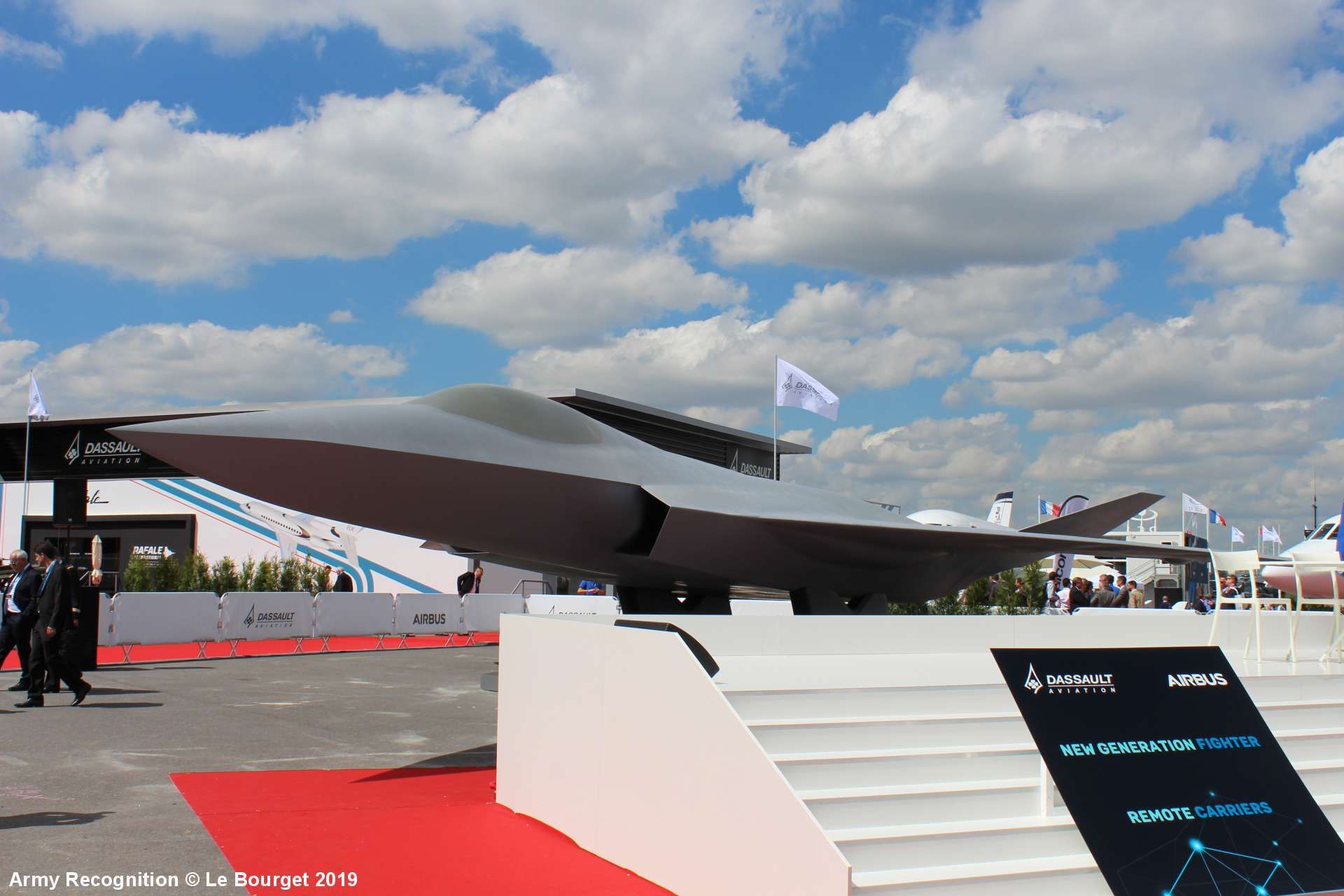Breaking news
Belgium invests €60 Million to develop the FCAS sixth-generation jet fighter.
On April 26, 2024, the Belgian government, acting on a recommendation from Defense Minister Ludivine Dedonder, agreed to proceed with Belgium's participation in the Next Generation Weapon System/Future Combat Air System (NGWS/FCAS) as an observer nation. Additionally, the Council approved the initiation of a specific research and development program for 2024, funded with €60 million, aimed at enhancing the Belgian defense industry’s capability to engage in the NGWS/FCAS development.
Follow Army Recognition on Google News at this link

The Future Combat Air System (FCAS), initiated in 2017 and also known as Système de Combat Aérien du Futur (SCAF), is a multinational defense project to develop a sixth-generation jet fighter (Picture source: Army Recognition)
After examining the timeline and the results of discussions held by Defense Minister Ludivine Dedonder with Germany, France, and Spain, the Belgian Council of Ministers gave approval to sign the administrative agreement confirming Belgium's observer status in the NGWS/FCAS program. This decision follows a previous directive from the Council of Ministers on June 16, 2023, which tasked Minister Dedonder with negotiating an agreement between Belgium and the participating countries.
The Future Combat Air System (FCAS), initiated in 2017 and also known as Système de Combat Aérien du Futur (SCAF), is a multinational defense project involving several European nations, including France, Germany, and Spain. The program aims to develop a sixth-generation jet fighter expected to replace aircraft such as the Rafale and Eurofighter. Central to the FCAS is the Next Generation Weapon System (NGWS), which includes a new-generation fighter (NGF), unmanned Remote Carriers (RCs), and a Combat Cloud (CC).
The NGF is designed as a highly advanced, multi-role combat aircraft featuring the latest technologies aimed at improving its operational effectiveness, survivability, and connectivity. The unmanned Remote Carriers (RCs) are intended to support the NGF by performing a variety of tasks, from surveillance to strike missions, serving as force multipliers in hostile environments.
The Combat Cloud (CC) represents a revolutionary aspect of the FCAS, functioning as a distributed digital framework that enables the fused management of data and operations across various platforms. This cloud-based system will facilitate real-time intelligence sharing, decision-making, and operations coordination between manned and unmanned systems in the air, as well as with naval, land, and cyber forces.
The NGWS is supported by seven technology pillars, divided among the partner nations, each managed by a leading national company. These pillars include the NGF, engines, RCs, the Combat Cloud, sensors, stealth technologies, and overall program coordination. The development involves key European aerospace and defense companies such as Dassault Aviation, Airbus, and Indra, who are tasked with integrating these complex systems into a cohesive operational platform.
Viewed as significant for upholding Europe's strategic autonomy and technological independence, the FCAS program aims to reach a demonstrator phase by 2027, with full operational capability expected by 2040. This extended timeline reflects the program's ambitious goals and the complex technological innovations it aims to integrate, including artificial intelligence, advanced sensors, and stealth technologies. As such, the FCAS program represents a major technological leap forward, marking a significant shift towards network-centric warfare where data and connectivity are as critical as the physical platforms themselves.


























